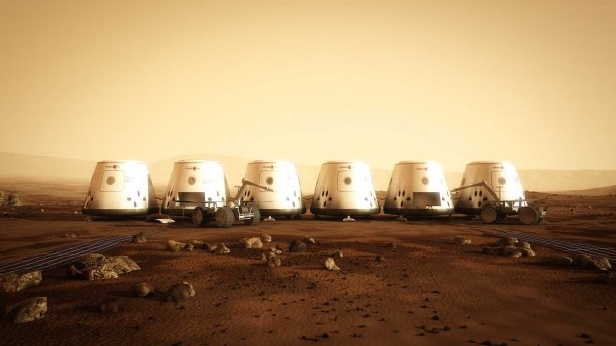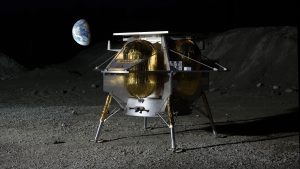Mars One Myth #1: It’s A Scam

If you are a Mars One candidate who has spent any time at all browsing the relevant blogs, you will have run into at least one misinformed article aimed at bursting our bubble at some point. People seem to have all kinds of misconceptions regarding our mission to colonize Mars. Some of their mistakes are pretty hilarious. If I was inclined to offer some constructive criticism, I would at least check my facts first.
One of my favorites? The people who claim that Mars One is a scam. They say that Mars One is playing to the dreams of so many average people that have grown up watching their heroes go into space that it isn’t even funny. It might claim to be a non-profit organization and it obviously exists to make a profit for people like entrepreneurial founder Bas Lansdorp.
“Proof” #1: There Was An Application Fee
The organization expected us to pay a fee that was calculated based on the GDP of each applicant’s home country. In the minds of so many bloggers, no self-respecting non-profit organization is going to charge its applicants an up-front fee simply for volunteering. It may have even worked. They got 200,000+ people who are actually gullible enough to apply for a mission that is never going to happen.
I see it differently, of course. By Mars One staffers’ own admission, the application fee is meant to weed out the potential future Martians who aren’t really serious about applying. They expected to see the ones who are interested solely for the bragging rights, the ones who are applying on a whim with no real intention of following through, and the ones who do not truly comprehend the fact that they are applying to spend the rest of their lives on a planet that is millions of miles from home. The application fee would have hopefully discouraged most of those people.
The fact is that narrowing down a field of 200,000+ applicants to only four initial colonists is going to cost money. One presumes that Mars One will pay the regional selection committees for their time spent interviewing and testing applicants, along with paying for the supplies used by these committees. That’s money that could be used to build rockets and send supplies to Mars over the next decade. The application fees will help to cover the costs of narrowing down the candidates to a reasonable number.
So it’s perfectly reasonable to have charged a nominal application fee that is theoretically affordable on the average salary of each nation involved. It will have weeded out most of the people who aren’t serious about it and defrayed some of the cost of the regional selections.
“Proof” #2: What Does Bas Lansdorp Get Out Of It?
Bas Lansdorp is the entrepreneur who founded Ampyx Power with the goal of developing more effective technology for harnessing wind energy. His official Mars One bio clearly states that he is a born entrepreneur who knows about organizing bold ventures. He specifically stated that, if the Olympics can turn into a multibillion-dollar entertainment bonanza, he should have very little difficulty raising the funds needed to cover the mission’s costs simply by selling the related media rights. Why did he decide to tackle the space front if not to make a profit?
I will give Mister Lansdorp credit for being honest. During lunch break at the August 2013 Million Martian Meeting in Washington, D.C., I overheard someone ask him if he had thought of going to Mars himself. He admitted that he had, but he didn’t think he had the kind of personality traits that the selection committee is going to look for. I figured he would have been lying if he had said otherwise.
From interviews I’ve seen and from talking to him at the D.C. MMM, it’s obvious that he is genuinely enthusiastic about Mars One. Even if he gets nothing else out of it, he will get the satisfaction of having backed a potential first permanent settlement on another planet. If the project fails, it means nothing worse than a little egg on the faces of Bas Lansdorp and everybody else involved, but they can recover. If it succeeds, he could have his name in the history books as one of the founders and a major promoter of the first privately funded mission to another planet. This kind of thing can be worth more than mere profit.
“Proof” #3: There’s No Way They’re Getting To Mars By 2025.
Naysayers will say that the technology just isn’t there and certainly isn’t tested for use on Mars. If that’s the problem, when will we have tried-and-true technology for colonizing Mars? When we’ve had about a bazillion more robots there? They’ve had self-powered, self-contained rovers on Mars that have been going for over a decade with no maintenance and the extremes of the Martian environment beating at them (Woot, Opportunity!).
I’ll go back to the early 1960s here. Alan Shepard had just had his flight in Freedom 7, a brief 15-minute hop that didn’t look like much compared to Russian accomplishments at the time. It was still a prime opportunity for Kennedy to set a goal that many people considered impossible at the time.
At least one person in NASA facilities was heard to growl, “Let him get on with his grand schemes, I gotta put a man in orbit first.” Even though the technology was nowhere near where it needed to be at the time and there were fatalities on both the American and Russian sides during the Moon race, the Americans managed to go to the Moon basically by putting the nose to the grindstone and getting the job done. Now that we’ve advanced by a few decades in the technology department since then, going to Mars by 2025 might look equally unlikely, but it’s not impossible.
“Proof” #4: You’ll All Have A Horrific Death!
Oh yeah, I saw that scene in “Total Recall” too. How much can eyeballs reasonably bulge out before they explode? But, reasonably, you’ll asphyxiate pretty quickly with less drama unless you get back to shelter in a massive hurry and, whatever you do, don’t try to hold your breath. However, a grotesque death won’t be high on my list of things to do while on Mars.
Things that don’t worry me all that much include:
- The addition of a few percentage points to my chances of getting cancer. As far as I’m concerned, odds are exactly that and there’s still the chance that I won’t even have to worry about it.
- Somebody flipping out. I’ve been operating on the assumption that Mars One will select colonists that are mentally stable enough to keep from throttling another team member when discussions get a little heated. If someone does develop the Martian version of cabin fever, the other three should be able to recognize that fact quickly enough to deal with the situation and save some lives.
- A catastrophic meltdown that doesn’t give some kind of warning. With the proper precautions, there should be no foreseeable problems that don’t give off some kind of warning before reaching the critical point. I could see our computer system including sensors that can detect potential problems and alert the team. It won’t replace human judgment, of course, but a situation that doesn’t give enough warning for the crew to react is one that is hopeless anyhow.
So, What’s My Point?
You’ve seen some of those blog entries that say it can’t be done, haven’t you? It would certainly help if they would check their facts. I’ve seen errors ranging from the idea that we’ll have to launch in 2021 to land in 2023 when there’s no proposed route that takes almost two years, to the idea that we’ll all be killed by exposure to the Martian environment in a way similar to what happened in the original “Total Recall.” So be sure to check your facts before you start throwing the word “Impossible!” around in relation to Mars One or anything else in life and space exploration.
Some Books You Should Read
More Mars Resources to Check Out On eBay
[ebayfeedsforwordpress feed=”http://rest.ebay.com/epn/v1/find/item.rss?keyword=%28Mars+Planet%2Ccolonizing+Mars%2Cobserving+Mars%2CMars+history%29+-%28Bruno+Mars%2CVeronica+Mars%29&categoryId1=267&categoryId2=1&sortOrder=BestMatch&programid=1&campaignid=5337337555&toolid=10039&listingType1=All&lgeo=1&feedType=rss” items=”10″]











